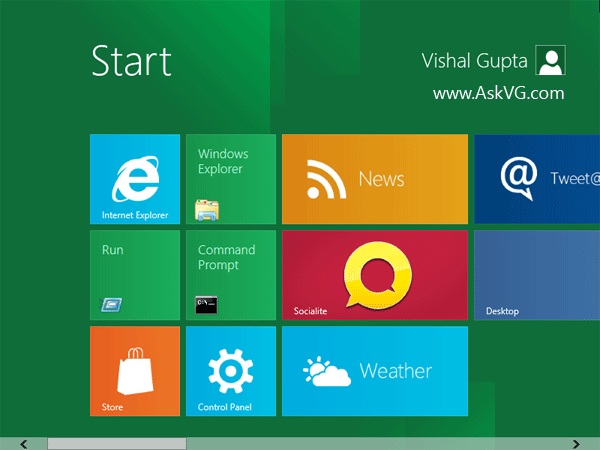Microsoft Reveals Hand Gesturing System for Tablets
Here's a patent made public just this month that shows Microsoft working on hand gesturing for tablets and Surface.
PatentBolt has discovered a patent application filed by Microsoft that covers real-time hand-gesturing for tablets, tabletops and more. The thing is, the mysterious patent reportedly doesn't explain a whole lot about the company's invention, but rather serves as a simplified prelude to a more detailed application to be submitted at a later date.
"[The system's] sole purpose is to present some concepts disclosed herein in a simplified form as a prelude to the more detailed description that is presented later," Microsoft states in the application.
According to the Redmond company, object detection and recognition are difficult problems in the field of computer vision. Recognition of hand poses in images are also problematic. However, there is a need to provide simple, accurate, fast and computationally inexpensive methods of both object and gesture recognition for many applications.
So as a solution, Microsoft proposes a system that allows the user to drive an application that is displayed on a tablet or projected on a tabletop simply by using hand gestures. The company is looking into finding ways to accurately determine when the user is hovering a hand above the display, and when the user's hand touches the screen.
"A random decision forest is trained to enable recognition of hand poses and objects and optionally also whether those hand poses are touching or not touching a display surface," Microsoft explains. "The random decision forest uses image features such as appearance, shape and optionally stereo image features. In some cases, the training process is cost aware. The resulting recognition system is operable in real-time."
In a Microsoft patent image, the company shows a tablet with a motion-detection camera mounted within a work surface. The camera is arranged to capture images of the user's hands or other objects positioned between the camera and the display. An image processing system will be incorporated into the tablet and may be set up to classify images captured by the camera. The classification information would then by used by a user interface to control the tablet's display and drive a specific application. This system could also be used to control a display projected onto a surface.
For now it's assumed that the motion detection system will be applied to Windows 8 tablets and Surface tablets, and possibly even the company's pico-like projector system and/or device. Microsoft's patent application was originally filed in December 2011 and made public by the U.S. Patent and Trademark Office just this month.
Get Tom's Hardware's best news and in-depth reviews, straight to your inbox.

Kevin Parrish has over a decade of experience as a writer, editor, and product tester. His work focused on computer hardware, networking equipment, smartphones, tablets, gaming consoles, and other internet-connected devices. His work has appeared in Tom's Hardware, Tom's Guide, Maximum PC, Digital Trends, Android Authority, How-To Geek, Lifewire, and others.
-
el33t I don't know about the rest of you lot but I'm so sick of these new "physically-interactive" technologies.... I don't think I'll ever get accustomed to them...Reply -
arcainumbro I'm personally torn. Think about how many things your grandparents said "I just don't get that, or I just don't like that" about. Well, now it's our turn for those statements. Kids will now grow up with gestures and touch interfaces as the norm, so for them anything that we love and try to stick to will be old fashioned. I have a 7 month old daughter right now, and it may become reality that she will rarely use a computer with a mouse. And to her, having to touch a mouse with buttons will be weird and she won't like it.Reply -
drwho1 I already use a hand gesture system for tablets.Reply
It simulates a "bird gesture".
It also works for Apple products. -
The solution comming to Windows PC's, tablets, phone, and XBox is the Kinect technology. To enable "touch" and gestures without actually touching the screen with greesy fingers is comming soon.Reply
-
p05esto I like it. It would be cool to scroll down a web page by just waving your fingers instead of touching and dragging. That's probably the most obvious application, but I can see some others. It would have to work good, I see this being difficult and glitchy to start with. Kind of like the SUCK that is Siri on iPhones.Reply -
RipperjackAU Just imagine having gesture based passwords. You know, you have to look like a spastic, going through a convulsive fit, just to gesture in your password to log in.Reply -
g00fysmiley I can see some uses for this, like reading on a tablet, instead of swipign across the page to ge tto the next page you could gestur at it to not leave any kind of finger print. or if you were watchign a movie a gesture for pause, play, rewinds and suchReply
though I am reminded of the galactic radion in the hithiker's guide to the galaxy where the radio uses voice comands to change stations then people were to lazy for that so they added where a wave of the hand could change stations, so when you found a station you wanted you had to remain perfectly still or it would change.
i think it'd be a valid concern as imagine you are reading, set your tablet down and it recognises the fan or somethign as a page back or forward, or registers you walkign away for a min and the cat jumping aorund playing over the tablet and suddenly you are a few pages ahead, it'd be interesting to see how it works
